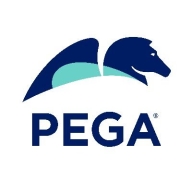

Pega Platform and IBM Operational Decision Manager compete in business process management and decision automation. While Pega Platform stands out with strong integration capabilities and low-code development, IBM Operational Decision Manager excels in advanced decision management, making it the better option for complex decision-making needs.
Features: Pega Platform offers robust integration options, dynamic case management, and agility in low-code development. IBM Operational Decision Manager provides powerful decision automation, rule authoring, and rule execution capabilities.
Room for Improvement: Pega could enhance its advanced rule-handling capabilities and decision automation features. Improvements to update processes from older versions could be beneficial. IBM might simplify deployment to reduce complexity and improve initial user engagement. Enhancing ease of use for beginners might also be considered.
Ease of Deployment and Customer Service: Pega Platform simplifies deployment with cloud-native services and responsive support, facilitating faster implementation. IBM Operational Decision Manager requires more intricate configuration but offers comprehensive customer support for navigating complex features.
Pricing and ROI: Pega Platform presents a flexible pricing model that offers significant ROI through efficient development processes, lowering overall costs. IBM Operational Decision Manager involves higher setup costs but provides long-term value with its robust decision automation, making it a strategic investment for decision-heavy environments.


IBM Operational Decision Manager is a comprehensive decision automation platform that helps you discover, capture, analyze, automate and govern rules-based business decisions. Anyone can work with it―from IT to business-line leaders. In seconds, it can authorize a loan, decide on a promotion or detect a cross-sell opportunity with high precision and customization. With IBM Operational Decision Manager, your applications will continuously remain up to date and well aligned with the changing business objectives of your organization. It is available in editions for both cloud and private cloud environments.
Pega Platform facilitates business process management, case management, and workflow automation for industries like banking, insurance, and healthcare. It supports digital transformation and customer service enhancements with its low-code capabilities and seamless integrations.
Pega Platform enables users to create efficient systems for case management, financial operations, and digital transformations. It provides tools for client onboarding, quoting, claims processing, customer experience improvements, and content management. Pega's low-code approach allows for the automation of complex processes, making it suitable for enterprises looking for adaptability and rapid deployment. While it offers strong real-time analytics and decision automation, users acknowledge challenges in user interface, integration, and performance aspects. High costs and a learning curve need attention, and enhancements in AI features and cloud services are desired.
What are the key features of Pega Platform?In banking, Pega Platform automates loan processing, accelerates customer onboarding, and manages compliance. Insurance companies benefit from streamlined claims processing and policy management. Healthcare sectors use the platform for patient engagement and care coordination, enabling organizations to adapt quickly to changing industry requirements.
We monitor all Business Rules Management reviews to prevent fraudulent reviews and keep review quality high. We do not post reviews by company employees or direct competitors. We validate each review for authenticity via cross-reference with LinkedIn, and personal follow-up with the reviewer when necessary.